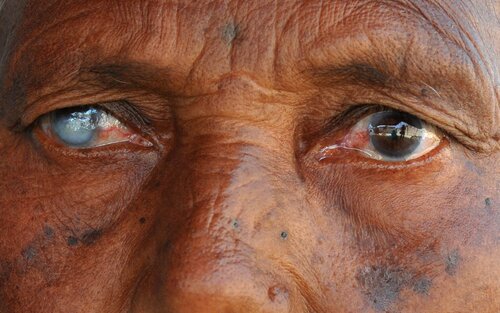Some individuals think that when they close their eyes, they get to experience blindness. This is entirely untrue as the condition provokes not only dread but also curiosity. We need to appreciate people with visual impairments and not base thoughts of them on any of the following ideas.
1. Blind people have superior hearing
This is entirely untrue and is based on the misconception that since blind people cannot see, their hearing becomes more acute to balance the effects. Visually disabled people simply learn to concentrate more, which is a process that occurs slowly over time.
Using concentration in innovative ways helps blind people to focus more, and this makes the masses think that visually disabled people can hear better than other people.
2. You must shout for a blind person to understand you
This misconception is almost laughable. Blind people are ordinary people, so they feel when a person is addressing them directly. Many of them choose to ignore shouting even when they are being addressed - it is a rude way to manage people.
When addressing blind or visually impaired people, one is asked to behave naturally and speak to them at average speed and tone without acting like they are talking to a person who does not exist. Blind people have feelings and emotions, and they understand speech patterns like everybody else.
3. Blind people have a 6th sense
Another misconception is that the visualy impaired have a sixth sense. Without sugar-coating anything, blind people do not have a sixth sense.
4. All blind people can read Braille
On the contrary, it is estimated that only 10% of blind people can read Braille. This is so because most blind people develop blindness after the age of 60 at which point is more difficult to learn Braille.
Another reason why not all blind people can read Braille is that some children with visual disabilities develop it as they grow older. First, they can read the sizeable fine print. As their condition deteriorates, they become resistant to reading Braille because they contact audiobooks, which are more manageable than Braille but serve similar purposes.
5. Most blind people are entirely blind
Legally, blindness is covered under several conditions. Some individuals only have peripheral vision while others have tunnel vision, while others can read only large print. Some visually impaired individuals suffer from focusing difficulties, and others possess light perception enabling them to differentiate sunlight from bulb light.
Sometimes blind or visually impaired individuals are not born with the condition; in some instances, blindness may occur as an accident throughout a person's life. These people maintain their visual reference, and certain sounds help for clear mental pictures.
6. Blind people cannot use a computer or smartphone
Currently, there are many computer software and modifications to enable blind people to use computers. Visually impaired individuals can rely on screen readers, which are computer programs that read out loud information on the monitor using voice synthesis. Information read includes; menus, web pages, input, etc.
Specially designed programs involve keyboard shortcuts enabling the blind user to access different monitor elements just like a sighted person would use the mouse. Visually impaired people can also access a brail display, a tablet-like device that displays embossed dots referencing different letters when reading.
These tools prove very efficient, but they require special training for the proper use and costly. These programs' productivity is based on software developers' proficiency to embed digital accessibility into the design.
Smartphone companies have developed apps like VoiceOver for iOS and TalkBack for Android. These programs enable visually impaired individuals to use smartphones to interact with the world—the apps voice actions appearing on the screen and facilitate interaction using gestures to convey messages.
7. Counting steps is effective and safe for walking
Some people believe that blind and visually impaired individuals move around safely by counting their steps as they walk and move around, which is false. This perception is very shallow and impractical in the real world. What happens when a visually impaired person is walking with a bruised ankle or decides to take a detour or stops for a chat with a friend?
The idea of counting steps is outrageous—the most probable things to use while walking is landmarks, driveways, and streets. A blind or visually impaired person can rely on a guide dog to move around quickly. The counting of steps while walking is like counting the number of tire revolutions while taking a drive. Numerous blind or visually impaired people prefer using a cane to move around quickly without fear of injury.
8. Guide dogs know numerous commands and locations
Some individuals are under the impression that guide dogs have mastered numerous locations and multiple commands, which is false. It is essential to understand that a guide dog knows about five orders above the average dog; some include stop, right, forward, and left. It's not like you can tell the dog where to go, and it will just take you there.
The visually impaired individual needs to navigate the guide dog. Leaving the dog in control might be a bad idea that may culminate in injury. According to statistics cane, travelers tend to have a higher employability rate than people with guide dogs. Most apartments do not allow guide dogs due to sanitary concerns.

